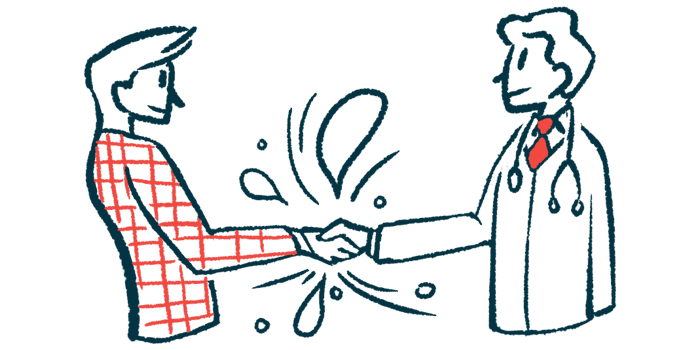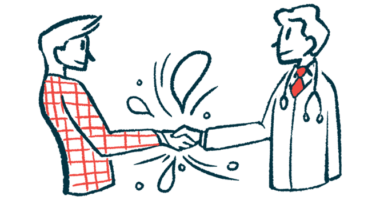Neuropeutics partners to advance potential disease-modifying therapy
Small molecule, JRMS-22, seen to prevent toxic TDP-43 clumping in early studies

Neuropeutics has partnered with LifeArc to advance work on a small molecule therapy against TDP-43 clumping as a potential disease-modifying treatment for amyotrophic lateral sclerosis (ALS), also known as motor neuron disease (MND).
Studies in cellular and animal models found the candidate treatment, JRMS-22, prevented or reversed the TDP-43 protein clumps that damage nerve cells. TDP-43 accumulation in neurons is found in about 97% of all with ALS, whether a person has familial ALS and sporadic disease.
LifeArc scientists and its drug discovery assays will assist Neuropeutics in advancing JRMS-22.
TDP-43 clumps, formed outside the cell nucleus, damage motor neurons
“This collaboration represents a significant step toward addressing the urgent need for effective treatments for patients living with MND/ALS and potentially other diseases with TDP-43 pathology,” Marc Shenouda, PhD, CEO of Neuropeutics, said in a company press release.
The TDP-43 protein normally is found in the cell’s nucleus, where DNA is stored, playing a role in the processing of certain RNA molecules. These molecules, produced when genes are read, can move out of the nucleus to serve as a template for protein production.
Abnormal TDP-43 is prone to forming clumps outside the cell nucleus that are damaging to motor nerve cells, or motor neurons, needed to control voluntary movement. These toxic clumps also can spread from one nerve cell to another, further contributing to ALS progression. Its aggregation also is found in people with Alzheimer’s disease and frontotemporal dementia.
Work by two scientists then at the University of Toronto — Marc Shenouda and Janice Robertson, who co-founded and now head the Canada-based company — led to the development of JRMS-22.
Neuropeutics reports that JRMS-22 reduced TDP-43 protein clumping in a mouse disease model by about 30% after two weeks of treatment.
LifeArc, a U.K.-based independent medical research charity, supports with funding and scientific expertise early research into serious diseases with pressing unmet needs, including ALS and MND.
“There is an urgent need for new, effective treatments for MND/ALS, and this partnership represents a crucial step toward developing therapies not only for ALS but also for related conditions,” said Paul Wright, PhD, head of Motor Neuron Disease at LifeArc.







